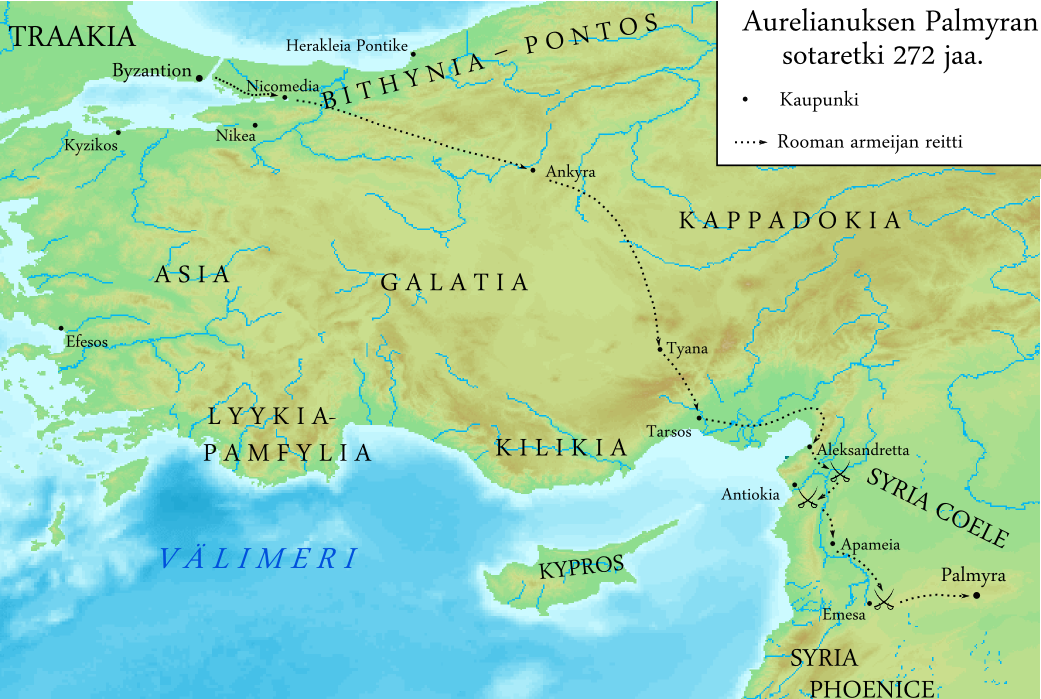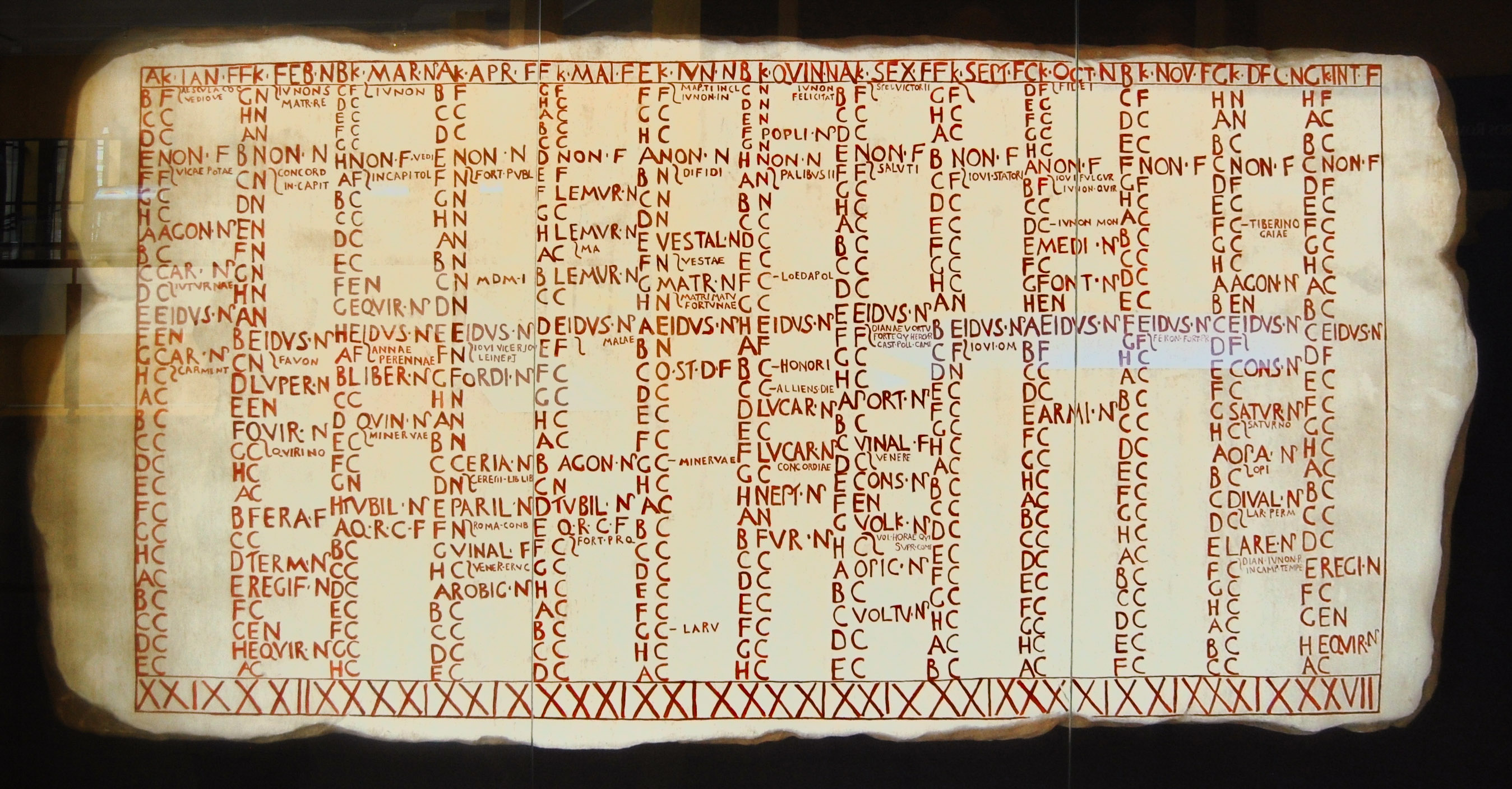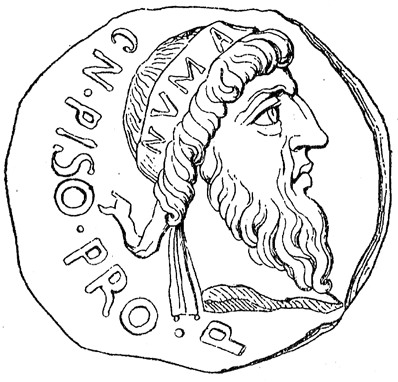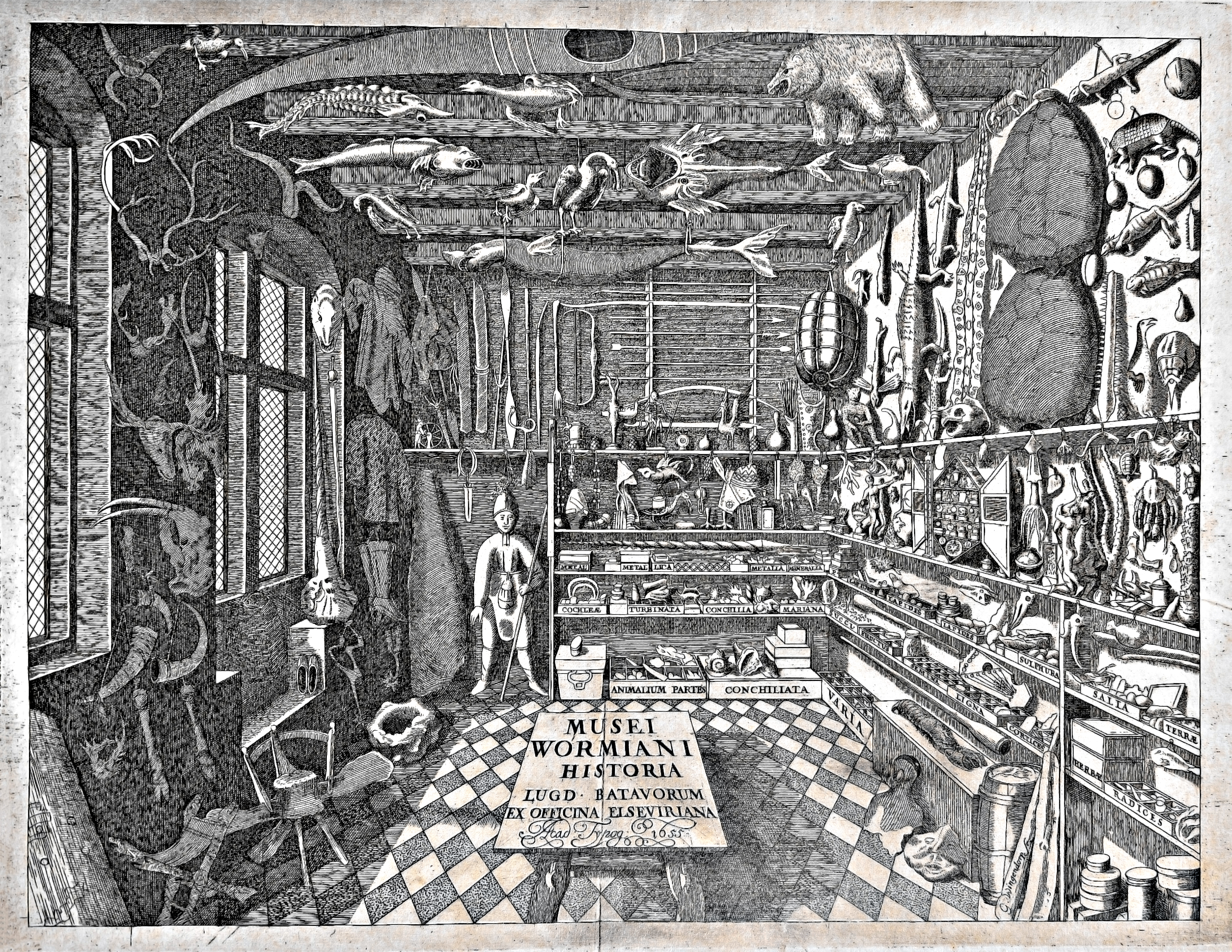|
Amburbium
The Amburbium ("City Circuit", from ''ambire'', "to go around" + ''urb-'', "city"; plural ''amburbia'') was an ancient Roman festival for purifying the city; that is, a lustration ''(lustratio urbis)''. It took the form of a procession, perhaps along the old Servian Wall, though the length of 10 kilometers would seem impractical to circumambulate. If it was a distinct festival held annually, the most likely month is February, but no date is recorded and the ritual may have been performed as a "crisis rite" when needed. The Amburbium can be hard to distinguish from the Ambarvalia in ancient sources, either because it was a similar set of ritual procedures performed on behalf of the city instead of the fields or rural areas ''(arva)'', or because both originated with the priesthood of the Arvales, "Brothers of the Fields". Vopiscus sees the two as closely related: "the city is purified, the hymns are chanted, the Amburbium is celebrated, the Ambarvalia is carried out." Both fe ... [...More Info...] [...Related Items...] OR: [Wikipedia] [Google] [Baidu] |
Ambarvalia
Ambarvalia was a Roman agricultural fertility rite, involving animal sacrifices and held on 29 May in honor of Ceres, Bacchus and Dea Dia. However, the exact timing could vary since Ambarvalia was a "fariae conceptivae" - a festival not bound to a fixed date. Summary Ambarvalia is believed to have taken its name from the words "ambiō" - "I go round" and "arvum" - "field". During the festival, they sacrificed a bull, a sow, and a sheep, which were led in procession thrice around the fields. This sacrifice was called a '' suovetaurilia'' in Latin. Ambarvalia can be of two kinds: public and private. The private were solemnized by the masters of families, accompanied by their children and servants, in the villages and farms out of Rome. The public was celebrated within the city's boundaries, in which twelve '' fratres arvales'' walked at the head of a procession of citizens who had lands and vineyards in Rome. During the procession, prayers would be made to the goddess. The ''a ... [...More Info...] [...Related Items...] OR: [Wikipedia] [Google] [Baidu] |
Religion In Ancient Rome
Religion in ancient Rome consisted of varying imperial and provincial religious practices, which were followed both by the Roman people, people of Rome as well as those who were brought under its rule. The Romans thought of themselves as highly religious, and attributed their success as a world power to their collective piety () in maintaining Pax deorum, good relations with the gods. Their Polytheism, polytheistic religion is known for having honoured List of Roman deities, many deities. The presence of Magna Graecia, Greeks on the Italian peninsula from the beginning of the historical period influenced Culture of ancient Rome, Roman culture, introducing some religious practices that became fundamental, such as the of Apollo. The Romans looked for common ground between their major gods and those of the Greeks (), adapting Greek mythology, Greek myths and iconography for Latin literature and Roman art, as the Etruscans had. Etruscan religion was also a major influence, partic ... [...More Info...] [...Related Items...] OR: [Wikipedia] [Google] [Baidu] |
Maurus Servius Honoratus
Servius, distinguished as Servius the Grammarian ( or ), was a late fourth-century and early fifth-century grammarian. He earned a contemporary reputation as the most learned man of his generation in Italy; he authored a set of commentaries on the works of Virgil. These works, ("Exposition on Three Works of Virgil"), ("Commentaries on Virgil"), ("Commentaries on the Works of Vergil"), or ("Commentaries on the Poems of Virgil"), constituted the first incunable to be printed at Florence, by Bernardo Cennini, in 1471. In the ''Saturnalia'' of Macrobius, Servius appears as one of the interlocutors; allusions in that work and a letter from Symmachus to Servius indicate that he was not a convert to Christianity. Name The name Servius also appears as Seruius owing to the unity of the Latin letters V and U from antiquity until as late as the 18th century. Many medieval manuscripts of Servius's commentaries give him the praenomen Marius or Maurus and the cognomen Honoratu ... [...More Info...] [...Related Items...] OR: [Wikipedia] [Google] [Baidu] |
Aurelian
Aurelian (; ; 9 September ) was a Roman emperor who reigned from 270 to 275 AD during the Crisis of the Third Century. As emperor, he won an unprecedented series of military victories which reunited the Roman Empire after it had nearly disintegrated under the pressure of barbarian invasions and internal revolts. Born in modest circumstances, most likely in Moesia, Moesia Superior, he entered the Roman army in 235 and climbed up the ranks. He went on to lead the cavalry of the emperor Gallienus, until Gallienus' Gallienus#Assassination, assassination in 268. Following that, Claudius Gothicus became emperor until his own death in 270. Claudius' brother Quintillus then ruled for three months, before Aurelian took the empire for himself. Aurelian was chosen Roman emperor by the Illyrians, Illyriciani as one of themselves. During his reign, he defeated the Alamanni after a devastating war. He also defeated the Goths, Vandals, Juthungi, Sarmatians, and Carpi (people), Carpi. Aurelian ... [...More Info...] [...Related Items...] OR: [Wikipedia] [Google] [Baidu] |
Manes
In ancient Roman religion, the ''Manes'' (, , ) or ''Di Manes'' are chthonic deities sometimes thought to represent souls of deceased loved ones. They were associated with the '' Lares'', '' Lemures'', '' Genii'', and '' Di Penates'' as deities ('' di'') that pertained to domestic, local, and personal cult. They belonged broadly to the category of '' di inferi'', "those who dwell below", the undifferentiated collective of divine dead. The Manes were honored during the Parentalia and Feralia in February. The theologian St. Augustine, writing about the subject a few centuries after most of the Latin pagan references to such spirits, differentiated Manes from other types of Roman spirits: Latin spells of antiquity were often addressed to the Manes. Etymology and inscriptions Manes may be derived from "an archaic adjective manus—''good''—which was the opposite of immanis (monstrous)". Roman tombstones often included the letters ''D.M.'', which stood for ''Dis Manibus'', ... [...More Info...] [...Related Items...] OR: [Wikipedia] [Google] [Baidu] |
Roman Calendar
The Roman calendar was the calendar used by the Roman Kingdom and Roman Republic. Although the term is primarily used for Rome's pre-Julian calendars, it is often used inclusively of the Julian calendar established by Julius Caesar in 46 BC. According to most Roman accounts, #Romulus, their original calendar was established by their Roman legend, legendary list of kings of Rome, first king Romulus. It consisted of ten months, beginning in spring with March and leaving winter as an unassigned span of days before the next year. These months each had 30 or 31 days and ran for 38 nundinal cycles, each forming a kind of eight-day weeknine days inclusive counting, counted inclusively in the Roman mannerand ending with religious rituals and a Roman commerce, public market. This fixed calendar bore traces of its origin as an observational calendar, observational lunar calendar, lunar one. In particular, the most important days of each monthits kalends, nones (calendar), nones, a ... [...More Info...] [...Related Items...] OR: [Wikipedia] [Google] [Baidu] |
Ianuarius
, ("January"), or in full , abbreviated , was the first month of the Roman calendar, ancient Roman calendar, from which the Julian calendar, Julian and Gregorian calendar, Gregorian month of January derived. It was followed by ''Februarius'' ("February"). In the calendars of the Roman Republic, ''Ianuarius'' had 29 days. Two days were added when the Julian calendar, calendar was reformed under Julius Caesar in 45 BCE. In the oldest Roman calendar, which the Romans believed to have been instituted by their legendary founder Romulus, the first month was ''Martius (month), Martius'' ("month of Mars (mythology), Mars", March (month), March), and the calendar year had only ten months. ''Ianuarius'' and ''Februarius'' were supposed to have been added by Numa Pompilius, the second king of Rome, originally at the end of the year. It is unclear when the Romans reset the course of the year so that January and February came first. ''Ianuarius'' is conventionally thought to have taken its n ... [...More Info...] [...Related Items...] OR: [Wikipedia] [Google] [Baidu] |
Numa Pompilius
Numa Pompilius (; 753–672 BC; reigned 715–672 BC) was the Roman mythology, legendary second king of Rome, succeeding Romulus after a one-year interregnum. He was of Sabine origin, and many of Rome's most important religious and political institutions are attributed to him, such as the Roman calendar, Vestal Virgins, the cult of Mars, the cult of Jupiter, the cult of Romulus, and the office of ''pontifex maximus''. Genealogy According to Plutarch, Numa was the youngest of Pomponius's four sons, born on the day of Rome's founding (traditionally, 21 April 753 BC). He lived a severe life of discipline and banished all luxury from his home. Titus Tatius, king of the Sabines and a colleague of Romulus, gave in marriage his only daughter, Tatia (wife of Numa Pompilius), Tatia, to Numa. After 13 years of marriage, Tatia died, precipitating Numa's retirement to the countryside. According to Livy, Numa resided at Cures, Sabinum, Cures immediately before being elected king.Livy, ''Ab u ... [...More Info...] [...Related Items...] OR: [Wikipedia] [Google] [Baidu] |
King Of Rome
The king of Rome () was the ruler of the Roman Kingdom, a legendary period of Roman history that functioned as an elective monarchy. According to legend, the first king of Rome was Romulus, who founded the city in 753 BC upon the Palatine Hill. Seven legendary kings are said to have ruled Rome until 509 BC, when the last king was overthrown. These kings ruled for an average of 35 years. The kings after Romulus were not known to be dynasts and no reference is made to the hereditary principle until after the fifth king Tarquinius Priscus. Consequently, some have assumed that the Tarquins' attempt to institute a hereditary monarchy over this conjectured earlier elective monarchy resulted in the formation of the Republic. Overview Early Rome was ruled by the king (''rex''). The king possessed absolute power over the people; no one could rule over him. The Senate was a weak oligarchy, capable of exercising only minor administrative powers, so that Rome was ruled by its king w ... [...More Info...] [...Related Items...] OR: [Wikipedia] [Google] [Baidu] |
Late Antiquity
Late antiquity marks the period that comes after the end of classical antiquity and stretches into the onset of the Early Middle Ages. Late antiquity as a period was popularized by Peter Brown (historian), Peter Brown in 1971, and this periodization has since been widely accepted. Late antiquity represents a cultural sphere that covered much of the Mediterranean world, including parts of Europe and the Near East.Brown, Peter (1971), ''The World of Late Antiquity (1971), The World of Late Antiquity, AD 150-750''Introduction Late antiquity was an era of massive political and religious transformation. It marked the origins or ascendance of the three major monotheistic religions: Christianity, rabbinic Judaism, and Islam. It also marked the ends of both the Western Roman Empire and the Sasanian Empire, the last Persian empire of antiquity, and the beginning of the early Muslim conquests, Arab conquests. Meanwhile, the Byzantine Empire, Byzantine (Eastern Roman) Empire became a milit ... [...More Info...] [...Related Items...] OR: [Wikipedia] [Google] [Baidu] |
Antiquarian
An antiquarian or antiquary () is an aficionado or student of antiquities or things of the past. More specifically, the term is used for those who study history with particular attention to ancient artefacts, archaeological and historic sites, or historic archives and manuscripts. The essence of antiquarianism is a focus on the empirical evidence of the past, and is perhaps best encapsulated in the motto adopted by the 18th-century antiquary Sir Richard Colt Hoare, "We speak from facts, not theory." The ''Oxford English Dictionary'' first cites "archaeologist" from 1824; this soon took over as the usual term for one major branch of antiquarian activity. "Archaeology", from 1607 onwards, initially meant what is now seen as "ancient history" generally, with the narrower modern sense first seen in 1837. Today the term "antiquarian" is often used in a pejorative sense, to refer to an excessively narrow focus on factual historical trivia, to the exclusion of a sense of histori ... [...More Info...] [...Related Items...] OR: [Wikipedia] [Google] [Baidu] |
Macrobius
Macrobius Ambrosius Theodosius, usually referred to as Macrobius (fl. AD 400), was a Roman provincial who lived during the early fifth century, during late antiquity, the period of time corresponding to the Later Roman Empire, and when Latin was as widespread as Greek among the elite. He is primarily known for his writings, which include the widely copied and read '' Commentarii in Somnium Scipionis'' ("Commentary on the Dream of Scipio") about '' Somnium Scipionis'', which was one of the most important sources for Neoplatonism in the Latin West during the Middle Ages; the ''Saturnalia'', a compendium of ancient Roman religious and antiquarian lore; and ''De differentiis et societatibus graeci latinique verbi'' ("On the Differences and Similarities of the Greek and Latin Verb"), which is now lost. He is the basis for the protagonist Manlius in Iain Pears' book '' The Dream of Scipio''. Name Macrobius's given name () is unrecorded as is his family name (). His recorded nam ... [...More Info...] [...Related Items...] OR: [Wikipedia] [Google] [Baidu] |









